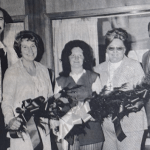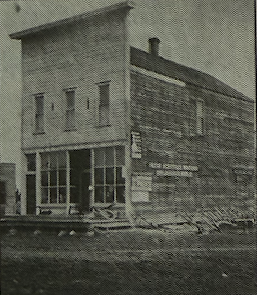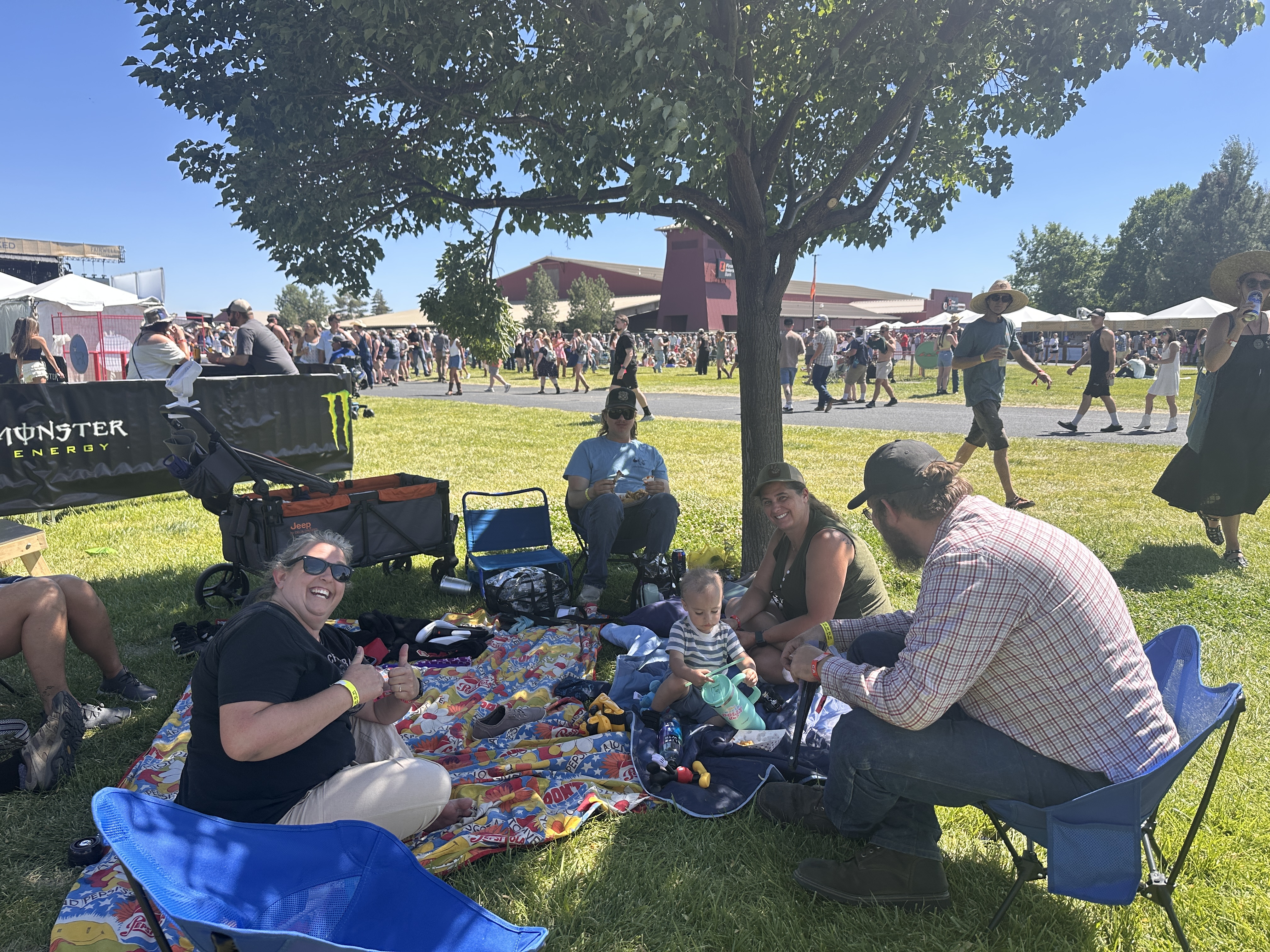Flashback: Over 2000 ready for X-ray tests 75 years ago
Published 4:38 pm Friday, May 2, 2025



100 Years Ago
May 14, 1925 — Annual tennis tournament here
Next Saturday, May 16, there will be held here the annual high school tennis tournament. The preliminaries will be played beginning at 10 a.m. and the finals will be played off in the afternoon on Dr. Baird’s courts if possible.
The preliminaries will be played off on the several best courts in town.
Trending
… Among the high schools to be represented will be Bend, Madras, Culver, Prineville, Metolius and Redmond. Each school will be represented by teams of boys’ singles and doubles, and girls’ singles and doubles.
John E. Hansen still able to ‘do his stuff’ in track
John E. Hansen, graduate of Redmond high school, took first honors in the high jump event in a track meet at the Oregon Agricultural College Saturday.
… Hansen won his event at a height of 5 feet 8 inches. He tried for height afterwards, but barely missed the bar at 5 feet, 10 inches.
He holds the state and Central Oregon high school jump records of 6 feet 5-8 inches. Hansen is a freshman enrolled at OAC.
75 Years Ago
May 11, 1950 — Over 2000 Ready For X-Ray Tests
Trending
If You’ve Not Been Seen, Go Anyway, Says Head; Shooting Starts Tuesday
Well over 2000 people have already signed to have their chests X-rayed when the state equipment goes into operation Tuesday morning, May 16, for a 10-day period in the Redmond area.
If you are one of the hundreds of people who haven’t yet been contacted by the army of housewive convassers, don’t despair, according to Chairman Walter Stauffacher.
Just go down and get your chest X-rayed anyway, he advises. The purpose of the canvass, he explained, was to build up a backlog of work to keep the machines busy with a minimum of congestion.
Everybody to Work Now every one of the more than 2000 people who have signed, he said, is expected to become a field worker and urged all friends, relatives and neighbors, whether contacted or not, to visit the X-ray stations.
It’s free, he points out, the actual X-ray operation requires less than a minute, and all reports are confidential.
One unit will be set up for the entire 10 days in the basement of Westminster hall. Another unit, which is mobile, will operate in various communities on the following schedule:
Terrebonne — Tuesday, May 16, all day.
Tumalo — Wednesday, May 17, all morning.
Redmond Airbase — Wednesday, May 17, in the afternoon.
Powell Butte — Thursday, May 18, all day.
Redmond Mills — Friday, May 19, all day.
Redmond Down Town — Saturday, May 20, all day.
Signers Pour In
Stauffacher has not yet received full canvass reports from all communities, but the total without Tumalo, Alfalfa and Cloverdale now stands at 2010. Powell Butte workers turned in 400 signers. There were 90 signers at the airbase, 1372 in the city of Redmond, and 148 in Terrebonne at his last count. He knows that for one, Mrs. George Billingsley in Cloverdale has already compiled a substantial list.
The purpose of the drive is to cause 100 per cent of the people in all these communities to get X-rayed in order to stamp out tuberculosis once and for all in the area. Stauffacher is delighted with the results of the canvass thus far, pointing out that if all of the signers bring others with them to the X-ray stations the results should be spectacular.
50 Years Ago
May 14, 1975 —Plans unveiled for group home
Central Oregon has at least 46 developmentally disabled adults who could benefit now or in the near future from a group home. Eleven of them could use the facility tomorrow if it existed.
A site plan for such a facility has been unveiled by John Halstead, executive director of the Opportunity Center of Central Oregon.
The community living facility, composed of four mobile units with exterior decor to match existing buildings at the center, would be located on the property adjacent to the opportunity center toward Redmond.
“We hope to put it together by January,” says Halstead, who is probing private and national foundations, individual citizens and civic groups for funding. He estimates. that construction will run $70,000 to $75,000 and that operation will cost $26,500 annually.
Halstead hopes to raise enough ($35,000) to enable the opportunity foundation to borrow the remainder on low-interest loan, with repayment to come from purchase of services.
The facility, designed for 10 persons at any one time, could be used for placement of individuals eligible for Social Security, welfare, vocational rehabilitation or veterans’ benefits. It also would be open to privately-funded individuals.
Handicapped persons, particularly the mentally retarded, from 18 years of age up would be eligible to live in the home. For many it would be an alternative to staying home with parents beyond childhood, living in a nursing home or being committed to institutions such as Fairview.
Each occupant would be involved during the day going to school, participating in the activity center or working either in the sheltered workshop or in the community.
Off-work hours would be devoted to activities that would teach proper personal care of the individual and his wardrobe; money management including banking procedures, budgeting, wage earning and contract
25 Years Ago
May 10, 2000 — Bond Levy: Hartman flaws remain unfixed
Patty Schulte often looks at her students on the court and shakes her head, as if watching the final seconds of a losing game.
“I really don’t know what we’re going to do,” she said.
Unfortunately, this isn’t a game, and she’s not talking about a team.
Schulte is the athletic director at Hugh Hartman Middle School. It’s her job to schedule sporting events, coach several teams and supervise daily PE classes. It has also become her job to figure out how to do all that with a growing student population and an undersized gym.
In fact, the gym is so small that during regulation basketball games staff can not pull out the bleachers fully because they cover part of the court.
“I have the same budget as Obsidian (Middle School), but I have to rent space at churches,” Schulte said. “And I can’t even do that anymore because they say they’re losing revenue.”
Schulte also worries about Hartman’s reputation. Although Hartman’s gym is too small even for one basketball court, Obsidian Middle School has a gym equipped with two full-size courts and additional space on the side.
“What does that say to the kids at Hartman?” she said. “I really felt like this was the time to take care of the problem.”
Last week, the Redmond School Board decided against including a gym for Hartman in the $48.1 million bond package it will seek Nov. 7. The levy will be used to build four new schools: two elementaries, one middle and one high school.
Although it looked like a gym would be included in the package prior to their decision, board members opted instead to focus on adding space for new students, according to board member Ted Thonstad.
“This bond is about building for the future. That became the overriding concern,” Thonstad said. “There is, however, a recognition by the board that we need to do something about Hartman.
An architectural firm has estimated a new gym at Hartman would cost $1.5- to $2 million.
Although board members have agreed to return any bond savings to the taxpayers, they also have the option of asking voters to approve using any savings for a gym at Hartman or other projects.
Central Oregon Community College did that in 1999 when it asked voters to use the savings from the construction of a new library to help build a new manufacturing center in Redmond. That brought $880,000 to the project.
Administrators predict they’ll save money on land costs by building two schools on one site and getting bargains on the other land they need as well. In all, the district set aside $2.9 million to buy land for schools.
They also expect to save on design costs since architects will use the Vern Patrick Elementary as a prototype for the new elementary schools.
In addition to bond savings, school administrators are hoping for help from the state. The governor’s office is working to determine the extent of deferred maintenance in the state’s 200 public school districts, and some relief is expected.
The reason Hartman’s gym is so small is a lesson in how not do school bond projects.
Hartman was built from the $25.5 bond levy passed in 1993. A similar levy failed the year before and passed only after the final amount was cut. That cut meant fewer dollars for the new Hartman. Exacerbating the problem were additional costs incurred during construction.
“That trimming process coupled with costs overruns put us in a position where we just couldn’t build the school we wanted to build,” Thonstad said.











